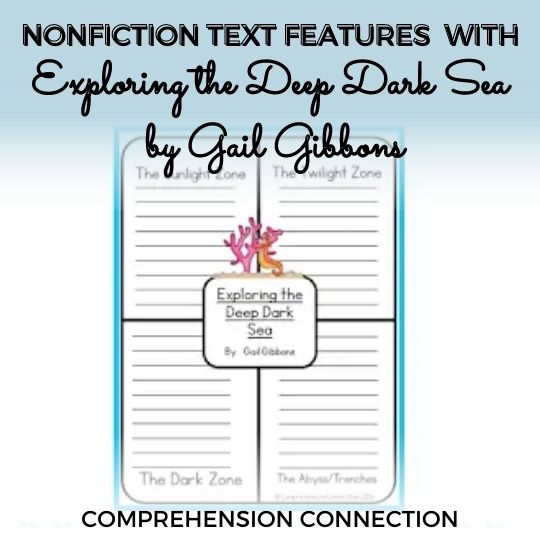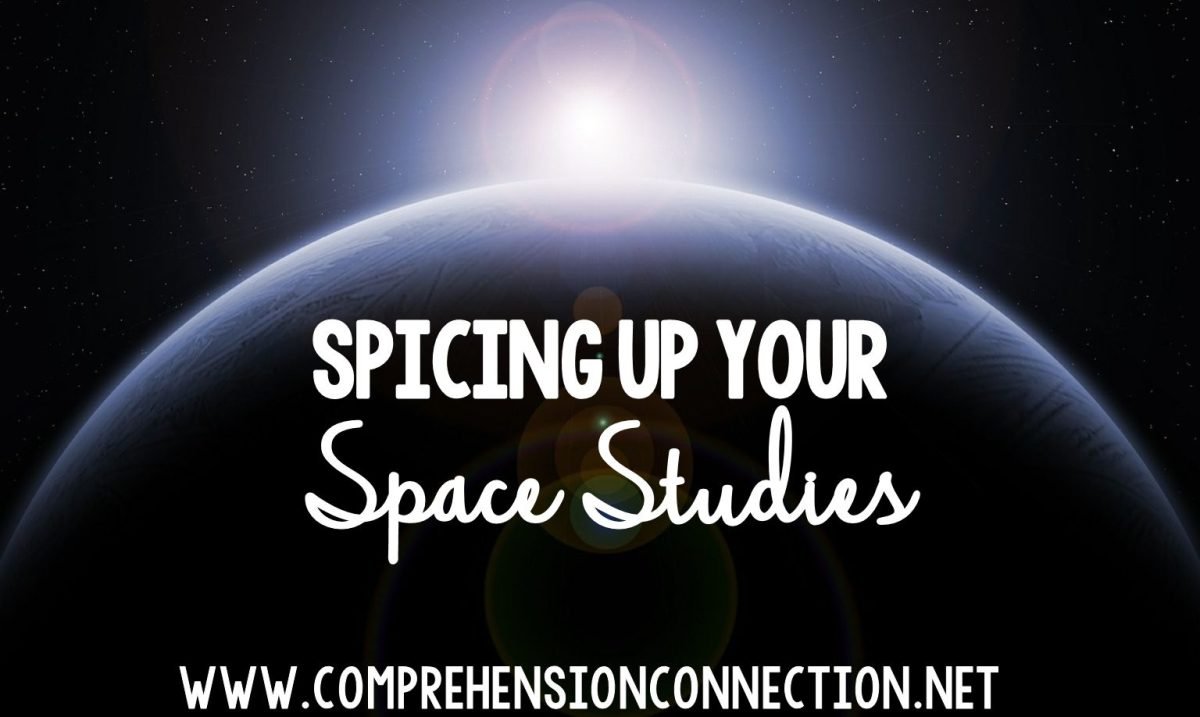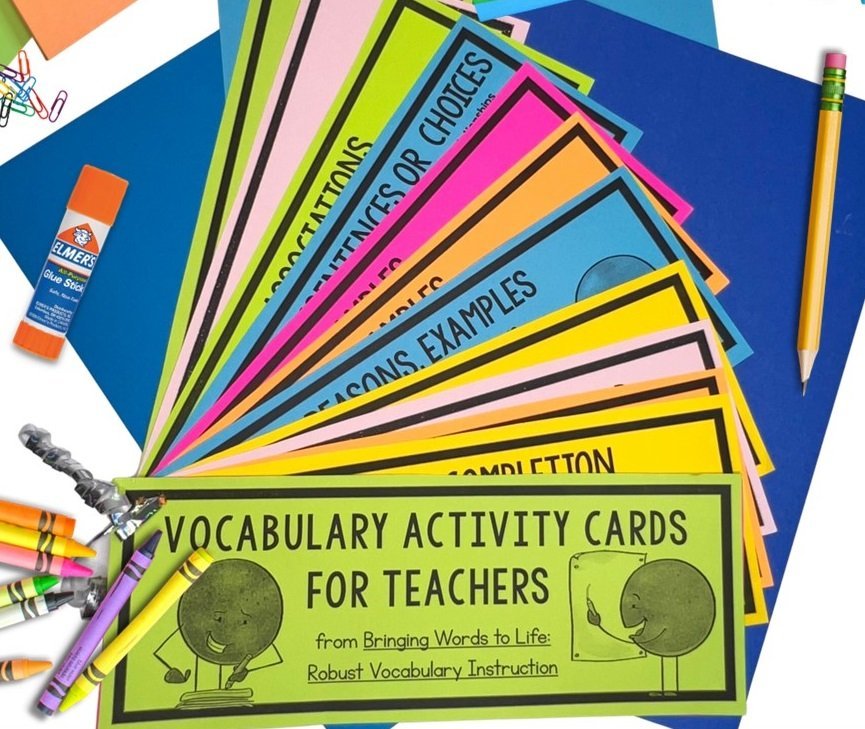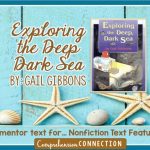
Teaching nonfiction text features just got a little easier! Author Gail Gibbons books are filled with nonfiction text features. Her book, Exploring the Deep Dark Sea, was the perfect choice for a summer link up. Since oceanography is taught in fifth grade in our state, this theme is a must for us. For this reason, I’d like to share my lesson and resource with you.
Gail Gibbons is my go-to author for nonfiction. There are other nonfiction authors I like too, but she takes deep content and makes it accessible for students reading at a late second grade to late fourth grade. I love how she carefully includes nonfiction text features and orchestrates the writing to demonstrate nonfiction text structures.
Introducing Our Text:
Did you know that the ocean floor is as deep as 36,000 feet in some places, includes mountains and has miles of flat space too? This book follows the job of an oceanographer and shares information about each of the ocean zones. It shows students the types of wildlife found in each zone and even shares the history of oceanography in a timeline.
Introducing Nonfiction Text Features:
For some students, understanding ocean concepts is a challenge. I think beginning a unit with a clip like The Magic School Bus Takes a Dive or another oceanography video is a great way to introduce the topic.
Before introducing this book, it’s important to get your students to activate their schema as it relates to the ocean. What experiences have they had? What have they seen? You can bring in sand and shells, pictures of sandcastles, or audio recordings of ocean waves, but most importantly, get your students talking with each other to share their discoveries and ideas. These pages are intended for use prior to reading. I recommend you preteach important vocabulary too.

Practicing Nonfiction Text Features with the Text

Once your students are warmed up and ready to explore, this is the perfect opportunity to explain reading strategies or skills needed to best comprehend the text content. This is a heavy book with challenging vocabulary. Yet, the text features make it much less challenging. Using text features in nonfiction is very important, and by using them. students will learn how animals have adapted to survive in different depths of the ocean as well as land features that relate to the ocean floor. I’ve included an anchor chart for group discussion and a column notes form for students to record their understandings during reading.
Putting It All Together:
Often, with complicated text in particular, a second reading is needed. This organizer can be used to help your students record what they learn about each zone of the ocean (Sunlight Zone, Twilight Zone, The Dark Zone, The Abyss, and Trenches). They will be fascinated by the types of animals found in each.

Subscribe and Receive the Lesson:
Lesson Extension Ideas:
There are so many options with an ocean theme from projects, to great literature, writing opportunities, and even outdoor play. I started this Pinterest board last year, and whether you teach oceanography in science or just want to have a little ocean fun at the beginning or ending of school, I’m sure you’ll find it helpful.
Links and Resources for Nonfiction Text Features
There are other posts on my site for nonfiction text features that you may find helpful. Check them out for lesson extension.
- 5 Signs You Should Teach Nonfiction Text Features
- Starting the Year with Beach Books Your Kids Love Most
- How to Teach Nonfiction Text Features with Frogs!

To see what else is available in our link up, check out the list below. Some mentor text lessons will remain free while others will become paid. Thanks for visiting and happy exploring! If you have questions, just shoot me a message using the form in the bottom right corner.

You are invited to the Inlinkz link party!
Click here to enter






















12 Responses
This is a fantastic post, Carla! I also love to use short video clips to entice students into text. This really gets their attention and heightens their interest and engagement. Your resource looks amazing! Downloading now! Thanks for all your hard work!
It's definitely for fifth grade, but that's where we teach oceanography. Many of Gail Gibbons' books can be used with the middle grades, but this one has challenging vocabulary. I'd hoped for Coral Reefs, but it wasn't available at our library. Thanks for joining in. 🙂
I thoroughly enjoyed this link up. I found some really great new titles along the way and some great ideas. Thank you all for sharing!
This looks like such a FUN lesson! I am always mesmerized by the ocean floor and I know students would be too 🙂 Thanks for sharing your amazing ideas!
Ahhh Gail Gibbons! Great post and activity Carla – such a fantastic topic!
Love this! It is perfect for so many different things! Thanks for sharing it!
Andrea
Thank you, Carla. I always love the activities you share with Gail Gibbons books.
Thanks a bunch, Sandy!
Excellent! Thanks for stopping by.
Thanks Julie! I appreciate it.
Love her books! 🙂
Thanks for dropping by.